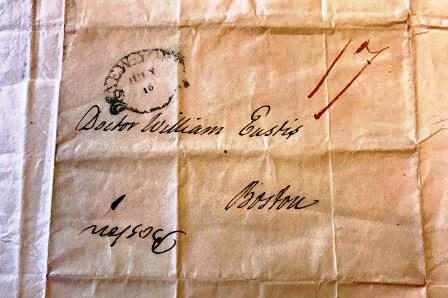By David “Amby” Tierney, Cohasset High School
This spring I had the pleasure of working with the incredible resources of the Massachusetts Historical Society for use in my research paper. The paper was about the connection between the early events of the American Revolution in Boston and the ideas of the early United States. Perhaps I had hit the right topic, but the Historical Society had a wealth of different sources I could use that were very specific to my topic. In fact, it was somewhat overwhelming. The Historical Society provides an excellent resource, ABIGAIL, which is an online catalog of all of their documents. A simple search will reveal dozens of relevant primary source documents. And these are available in multiple formats. Many of the documents are available online, like John and Abigail Adams’ personal correspondence. Even more are kept at the historical society, in microfilm and microfiche rolls that stack filing cabinets row upon row, top to bottom. Then there are the hard-copy documents from the eighteenth century, which are beyond cool to look at.
Which brings up the personal experience that comes with going in to see the documents. I personally very much enjoyed it. The first time I went in I was rather nervous. I had signed up to Portal1791, the online reservation service, and I assumed that the Massachusetts Historical Society would be a very serious place. I was unsure about what I would need, and I was worried that I hadn’t reserved the right documents. I thought that it was an absolute necessity to reserve documents far in advance. My misgivings were magnified when I realized that I forgot my student ID, which I was informed that I’d need. This turned out to be unfounded. Upon arriving, I signed in and was able to enter with the help of my history teacher, who was my advisor in the project. All of the people at the Massachusetts Historical Society were very friendly and very willing to help. I was impressed with the efficiency of the librarians, who were able to help me find what I needed. When I needed an extra document that I hadn’t reserved, the librarians were able to get it for me without a problem. One librarian was very insightful in teaching me how to use the microfilm reader. Overall, it was an excellent experience and I would recommend using the Massachusetts Historical Society to people doing research.
*****
The MHS has awarded the John Winthrop Student Fellowship since 2013. This fellowship encourages high school students to make use of the nationally significant documents of the Society in a research project of their choosing.















